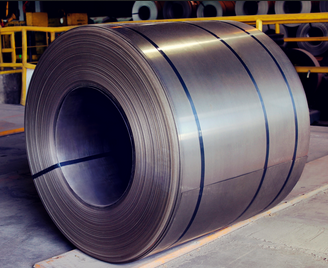
CRU: Gerdau mulls new steel mill in Mexico
Brazil-based Gerdau has announced it will carry out a feasibility study into the greenfield development of a 600,000 metric-ton-per-year (mt) special steel plant in Mexico.

Brazil-based Gerdau has announced it will carry out a feasibility study into the greenfield development of a 600,000 metric-ton-per-year (mt) special steel plant in Mexico.

Klöckner & Co. logged a wider net loss in the first quarter on-year, but the Duisburg, Germany-based service center group expects higher shipments and sales in the upcoming three months.

Thyssenkrupp Materials Services is continuing its expansion in North America. It announced the opening of a new steel service center in Sinton, Texas, to primarily serve the automotive, HVAC, and construction markets.

US steel exports eased through March but remain healthy, having reached a six-month high in February

US announces new import duties on aluminum extrusions The US Department of Commerce has placed preliminary antidumping (AD) duties of 2-600% on imports of aluminum extrusions from 14 countries. The rates are: “[The findings] show just how widespread dumping practices are globally and highlight the importance of strongly enforcing the antidumping laws to shield US […]

United Auto Workers (UAW) members at a Stellantis plant in Michigan have health and safety grievances so severe they are considering going on strike.

Constellium reported its latest quarterly results for Q1'24. Adjusted Ebitda came in at €137 million (USD$147 million), down 8.6% year over year (y/y) amid revenue of €1.7 billion (USD$1.8 billion), down 12% y/y. Shipments totalled 380,000 metric tons (mt) in Q1, representing a drop of 2% y/y.

GrafTech is reporting weak near-term demand for graphite electrodes as economic uncertainty constrains steel production globally.

I’ve gotten some questions lately about whether the huge gap between domestic hot-rolled coil (HR) prices and those for cold-rolled (CR) and coated is sustainable. I remember being asked similar questions about the wide spread between HR and plate that developed in early 2022. I thought at the time that there was no way that spread could hold. Turned out, I was wrong. That was humbling. And so I’m not going to make any bold predictions this time.

Destocking at service centers and a downturn in steel pricing impacted Ternium’s shipments in Mexico in the first quarter of the year.

Steel imports held steady in March, up just 1% from February according to preliminary Census data released earlier this week.

With strength in the sector and customers needing the product it produces, Cleveland-Cliffs’ chief executive says the company will be more selective with the automotive customers it chooses to serve.
Last week gave us a glimpse into the effect of the 2024 election campaign on trade policy. In a major announcement, the Biden administration pressed the US Trade Representative (USTR) to triple certain Section 301 tariffs on steel and aluminum. It’s a lot to unpack. You can find the full text of the announcement here. […]

Here’s a roundup of the latest news in the global aluminum market from our colleagues at CRU. Biden calls for tripling of Chinese steel and aluminum tariffs President Joe Biden is calling on the US Trade Representative (USTR) to consider increasing the existing section 301 import duty on Chinese steel and aluminum three-fold. The current […]

In this Premium analysis we cover North American oil and natural gas prices, drilling rig activity, and crude oil stock levels.

North American auto assemblies ticked up in March vs. the prior month, according to LMC Automotive data. While assemblies were up month on month (m/m), they are down 4.5% year on year (y/y).

The Biden administration on Wednesday announced measures to support the domestic steel industry.

US light-vehicle (LV) sales rose to an unadjusted 1.44 million units in March, up 4.6% vs. year-ago levels, the US Bureau of Economic Analysis (BEA) reported. The year-on-year (y/y) growth in domestic LV sales came in despite a 1.3% month-on-month (m/m) decline.

To ease trade tensions with the United States, the economy ministry in Mexico is preparing measures to strengthen definitions on steel being shipped into the country. Mexico has faced accusations it is being used as a route for steel and aluminum produced in Asia to be sent on to the US, so-called triangulation.

The latest US Department of Commerce data shows 840,000 short tons (st) of steel left the country in February. This is the highest monthly export rate since August 2023.
They say all’s fair in love and war. But that doesn’t seem to be the case in steel. Being deemed “unfair” could get you slapped with shiny new Section 232 tariffs these days. Then again, “unfair” implies a judge. And people on opposing sides seldom agree with the judgment. Such seems to be the current case between the US and Mexico.

AHMSA’s new investors, Argentem Creek Partners, have plans for a potential staggered restart of operations at the Mexican steelmaker.

Sheet prices continue to inch higher. That’s a welcome development for many. But it’s also a far cry from the price surge many predicted about a month ago. Remember the theory that supported a spring surge: Sheet prices would soar on a combination of mill outages, stable-to-strong demand, restocking, mill price increases, and (potentially) trade action against Mexico as well.

OnmiSource LLC, a subsidiary of Fort Wayne, Indiana-based steel producer and recycler, Steel Dyanmics, Inc., has acquired Toledo Shredding, LLC, in Ohio.

Steel companies in Mexico have lined up capex plans totaling $5.7 billion in the next three years. The focus is on replacing imports with domestic production, said David Gutierrez, outgoing president of sector association Canacero. “The investments are aimed at reducing imports, strengthening national production, and ensuring that the benefits stay in the country,” he was quoted as saying at Canacero’s annual congress by regional news service Business News Americas.

Numerous mid-sized export yards in California and in Baja Mexico had little to no inventory on the ground last week because most had sold forward in the falling March market. Looking to secure their margins, they dropped prices across the scale. That resulted in lower-than-normal flows. “I’m sold out through mid-April and even longer if the flow doesn’t pick up” one yard owner said. That turned out to be the position of numerous West Coast suppliers.

I can’t really define “Bidenomics” because it is so filled with contradictions. It seems to aim to increase manufacturing output in the United States. But not all increases are created equal.

SMU’s sheet prices firmed up modestly this week, even as CME hot rolled futures declined. What gives? My channel checks suggest that demand remains stable and that buyers have returned to the market following new HR base prices announced by mills earlier this month. I’m looking forward to seeing whether lead times, which have stabilized, will start extending. SMU will have more to share on that front when we release updated lead time figures on Thursday. As for HR futures, what a reversal! As David Feldstein wrote last Thursday, bulls expected mill price increase announcements. And we briefly saw the May contract climb as high as ~$1,000 per short ton (st).

There’s that concept from Adam Smith we all learn about in our Econ 101 classes: The Invisible Hand. A simple Google search will provide a refresh, but if memory serves I would classify it as something akin to “the market is magic” or “the market’s gonna market.” Today, obviously, we live in a mixed environment. There are a lot of hands out there, and they’re not too difficult to see. In this election year of 2024, one of the most visible hands out there probably belongs to the federal government.

Worthington Steel is taking a pause on M&A activity as it focuses on progressing its electrical steel expansions in Mexico and Canada.